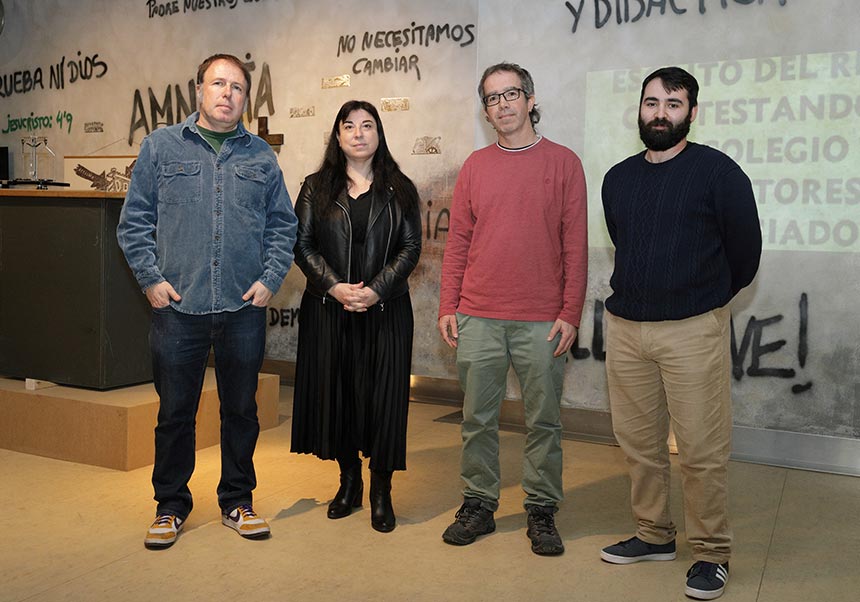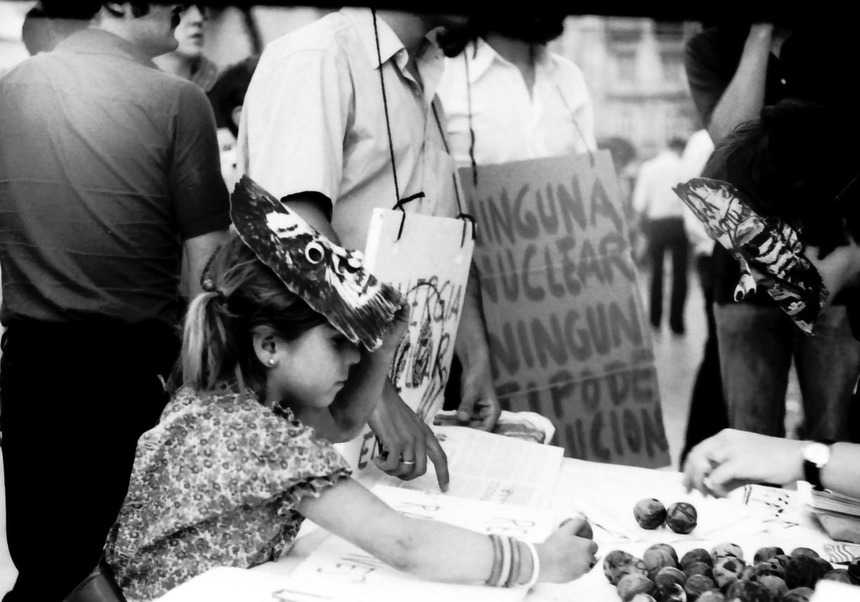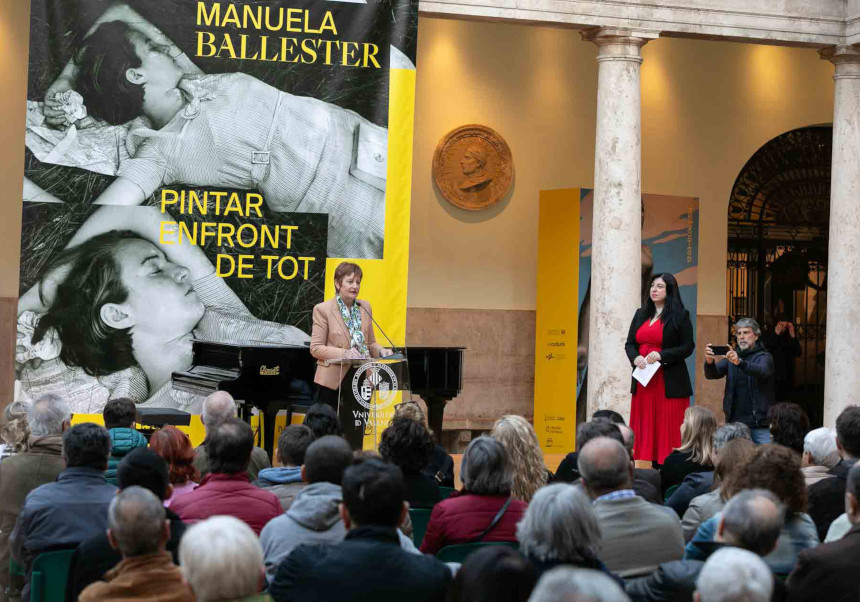La Nau dedicates an exhibition to Artist’s Book with the most relevant creators of the second half of the 20th Century
- Office of the Vice-Principal for Culture and Society
- November 19th, 2019
![Exposición ‘TEXT [NO TEXT]'. Foto: Desirée Juliana.](/recursos/fatwirepub/ccurl/970/580/expotextweb.jpg)
Andy Warhol, Edward Ruscha, Ulises Carrión, John Baldessari, Christian Boltanski and Jenny Holzer’s originals, among others, will be presented, on Tuesday 19 November, at 7.00 p.m., at the opening of the exhibition ‘TEXT [NO TEXT] Llibres i Publicacions d’Artista. Col·lecció UPV’ (TEXT [NO TEXT] Artist’s Books and Publications. UPV Collection), which could be visited at Sala Estudi General of Centre Cultural La Nau of Universitat de València until 12 January.
The exhibition is a selction of part of the collection of artist’s books and publications of Universitat Politècnica de València, which exceed the thousand copies. It collects the work of the most relevant artist of the second half of the 20th Century that used this book as artistic support. It is focused in the 60’s and 70’s, when a substantial break was produced in the artist’s book concept through the development of Fluxus and Pop Art movement.
This morning has presented the exhibition in a press conference that has counted with the participation of Antonio Ariño, Vice-Principal for Culture and Sport of the Universitat de València; José Luis Cueto, Vice-Principal for Student Body, Culture and Sport of Universitat Politècnica de València, and the commissioner, Antonio Alcaraz.
The exhibition collects approximately 80 publications in seven sections that attend to the use or non-use of the text, according to the domination of image or language. The first section is the most historical part, goes back to the origin of the artists and the book of the 60’s and Fluxus field. Collects great artists as George Maciunas, creator of the movement. or La Monte Young and its collective book ‘An Anthology’. The second deals with the concept of Beau Geste Press, the publishing house that made up the Mexican Felipe Ehrenberg to publish experimental publications with primitive equipment.
In the third section, the exhibition presents the artist’s book as mass product through pop, minimalism and conceptual art. It includes legendary works such as the pop-up ‘Every Building on the Sunset Strip’ of Edward Ruscha or ‘Wharhol’s Index (book)’. The fourth section is focused on geometry and design and the lack of text with works by Bruno Munari and Sol Lewitt. The fifth sector is about photography and strategy of the ARCHIVO, with artists who worked with the photographic image from the point of view closest to the documentalist.
The last two sections of the exhibition are focused on artists that work with language. On the one hand, writings and documents, artists who use the text for making their work. On the other hand, the poetic experimentation, visual poetry and concrete poetry, where dominates the work of relevant Latin artists such as Edgardo Antonio Vigo or Guillermo Deisler.
The commissioner of ‘TEXT [NO TEXT] Llibres i Publicacions d’Artista. Col·lecció UPV’, Antonio Alcaraz, explains that the importance of the exhibition lies in the generation of plastic artists that embraces, not just the use of the book to spread his work, but also to innovate the concept and its architecture. Regarding the impact on the public, Alcaraz states that people who visit the exhibition “are going to see the work of very relevant artists and they are going to realise the importance of the work in book format in relation to what they do in other media”.
José Luis Cueto highlighted the uniqueness of this collection of the Universitat Politècnica de València, which has more than 1,400 catalogued copies and is located in the Library of the Faculty of Fine Arts. It begins with works made since the 1960s and serves both the artist's book, as well as special publications, experimental magazines, illustrated books, visual poetry or any work done by artists in book format. The Vice-Principal also explained that it is not the only artistic collection available, which stands out for its commitment to art, in addition to being the only polytechnic university in Spain with a faculty of Fine Arts.
Finally, Antonio Ariño expressed the satisfaction of organizing this exhibition together with the Politècnica de València, since both institutions are closing the collaboration that they have made throughout this year with the organization of joint exhibition projects, on the occasion of the 20th anniversary of La Nau and the 520th anniversary of the Universitat, and the 50 years of the creation of the Universidad Politècnica de València.
A new conception: book as an artistic object
It was at the beginning of the 1960s, the same decade that conceptual art was formulated, when a really different approach emerged both in the conception of artist's books and in their realization and in the form of distribution. In that period, the book occupied a central place in the production of relevant contemporary artists, being in turn the subject of critical theories about authorship (or better lack of authorship), the elimination in the book of text or image and, not least, on the impact of new technologies on the mass production of the work of art.
The artists, who decided to work with the book as a plastic support, assumed that their publications, in addition to as an artistic product, would function as purely communicative instruments that were produced by the most economical systems and would be easy to obtain. They started working with the most advanced printing techniques and processes, the reproduction of black and white photography through offset or Xerox, which allowed them to make numerous editions quickly and at a low cost. And, according to these criteria, they radically moved away from previous productions, the so-called livres d'artiste or illustrated books, as well as any of the other commitments of artists who used the book in the first half of the twentieth century.
In the first decades of the twentieth century, which correspond to the period of the so-called historical Vanguards, artistic movements worked with the intention of distancing themselves from nineteenth-century academicism and sought new means of expression, discovering in the book an ideal vehicle to develop their objectives. The book was transforming the function that exerted like a container of words, of ideas, of communication and the artists slowly were introducing other languages linked to the plastic arts. The innovation in the architecture of the book and the use of materials so far unrelated to the edition cause in the viewer a new experience that, sometimes, can leave in the background or even dispense with the content of the text. In that period, in addition to the book, posters and other advertising material played a fundamental role.
The book and artist publications in the sixties and seventies of the twentieth century, contemplated in the whole production of artists such as Ed Ruscha, Dieter Roth, John Baldessari, Sol LeWitt, Bruno Munari, Christian Boltanski, Bernd & Hilla Becher, Hans-Peter Feldmann, or Lawrence Weiner, to cite some of the most relevant, not only established book support as a perfectly comparable medium in contemporary art, but also - honoring its nature - offered a fundamental reading of the own profile of Fluxus, Minimalism or Conceptual Art.
The main museums and centers of contemporary art have completed their art collections with documentation and artist publications, due to the relevance of this material when offering a complete vision of the artistic production of many of the authors cited.
For this exhibition at the Centre Cultural La Nau of the Universitat de València, books have been selected by authors of recognized international prestige, which show both the most historical part of the collection and the origins of the artist's book contemporary.
File in: Cultura , Exposicions , Centre Cultural La Nau
















